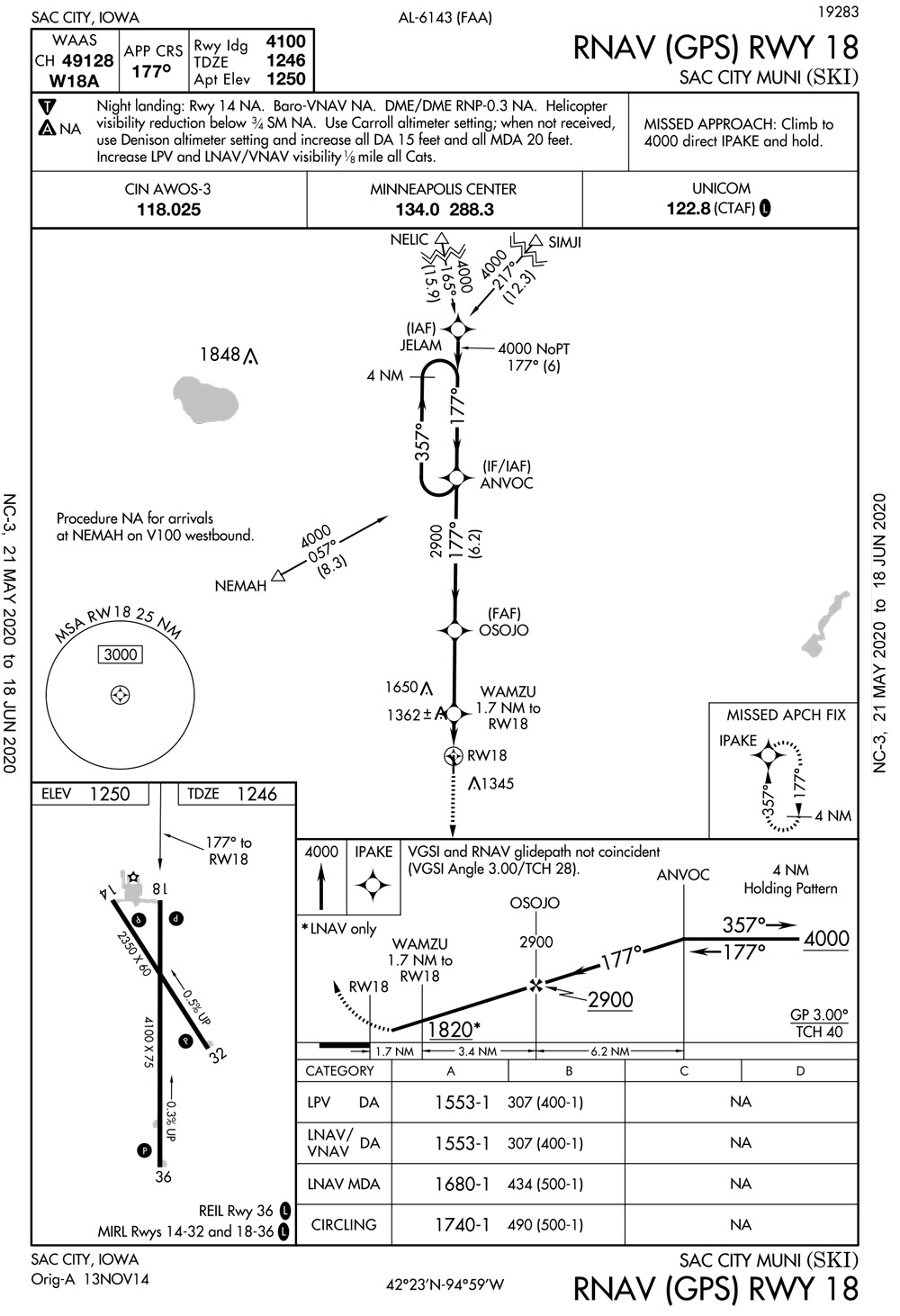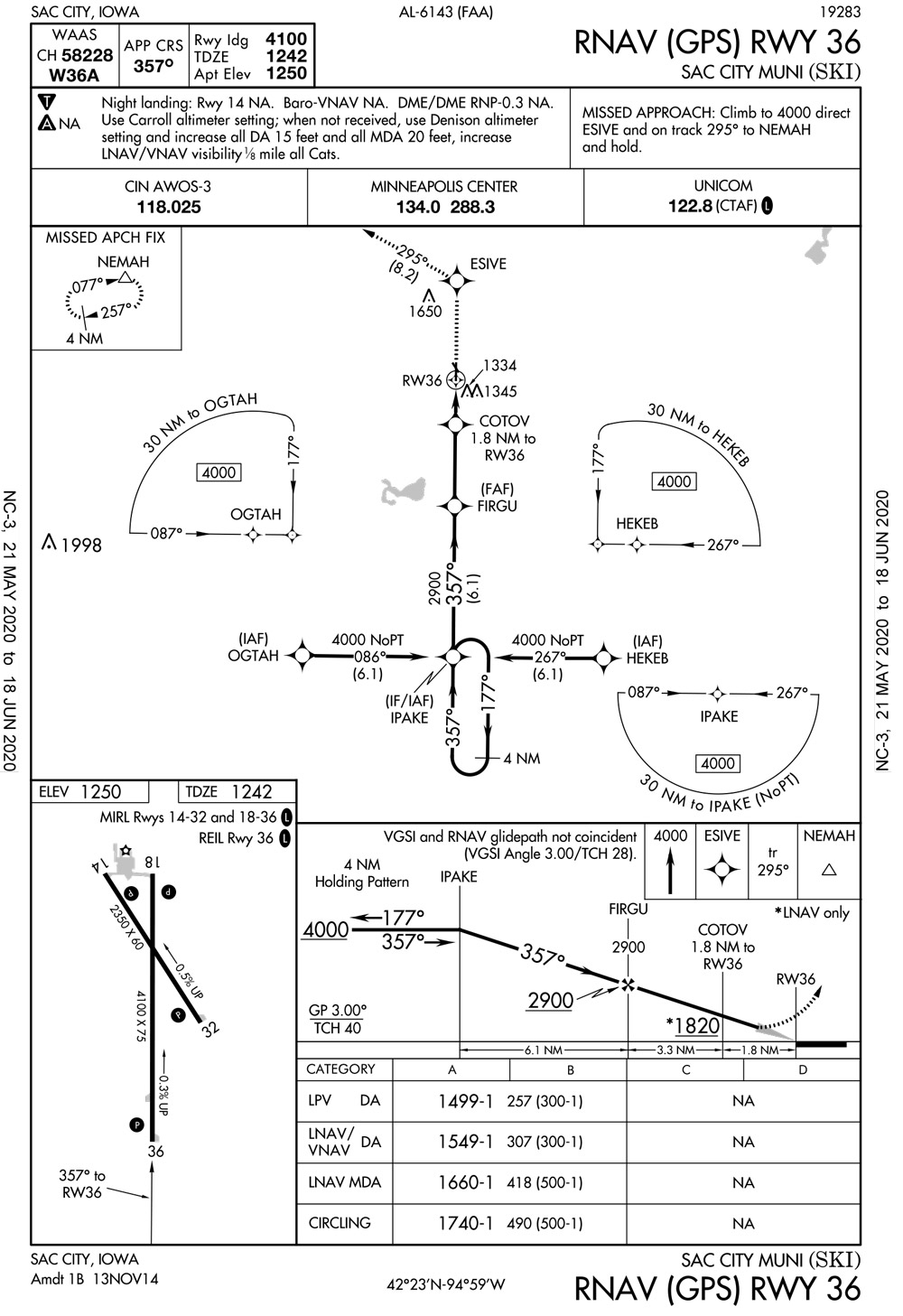Sac City’s airport is a significant resource for not only the town, but surrounding area. The city-owned facility Is managed by Ken Myers with a five-member board providing oversight. Average aircraft operations is 48 per week, with 57% from transient general aviation and 43% from local general aviation.
Although numerous planes visited Sac City in the earlier years of the 20th Century, there was not a significant local presence until 1939 or 1940 when a flying club purchased a used aeroplane and hired an instructor from Spirit Lake to train local residents desiring to learn to become pilots. Most flying activities took place southwest of Sac City. This activity, coupled with preparations for a world at war, created interest in developing a permanent airport for Sac City.
In 1944, L. R. Wayt reached out to Fred Heidelbauer, an instructor in the Naval Pilots School, to not only inform him of city interest in developing a base of operations in Sac City, but engage him to survey local sites for suitability as an airport. Later that year, Heidelbauer and the city leased a small tract of land immediately south of the present airport to serve as home to one Piper Cub and a meager flying operation. Although building materials were scarce, a used brooder house (chicken house) served as an office and enough used materials were scrounged together to build a T-Hanger. The airport was put into operation on Labor Day, 1944.
Later that year and in early 1945, the city completed the purchase of land for an airport that continues to this day. The original hangar was built in 1945 on the location of the present airport. A second hangar was constructed in 1946. In 1947, the government announced the inauguration of the G. I. training program and Heidelbauer Flying Service qualified for the program. In addition to Frank Heidelbauer and several local licensed flying instructors, additional instructors were brought in to teach ground school classes that included training in meteorology, communications and navigation. During the following four years, there were about 80 participants at all times that lead to more than 500 certified pilots. The program ended in 1952 when Heidelbauer chose to focus on airplane maintenance and charter work, with limited flight lessons.
Improvements to the airport have continued over the years. In 1956, the first runway lights were purchased thanks, in part, to the State Aeronautics Commission; in 1957, the same program assisted with the acquisition of first two-way radio system.
In discussing the history of the airport, Duane Colburn stated, “History is made by people, and in this case, much of the progress of the local airport facilities was the result of the farsightedness of the people who were behind the initial activity to get the airport started.”
That farsightedness continues to serve the airport to this day as the city, airport commission, and businesses work together to provide a facility to meet the needs of local people and businesses.
Airport Hangars
There are currently no vacancies available.




